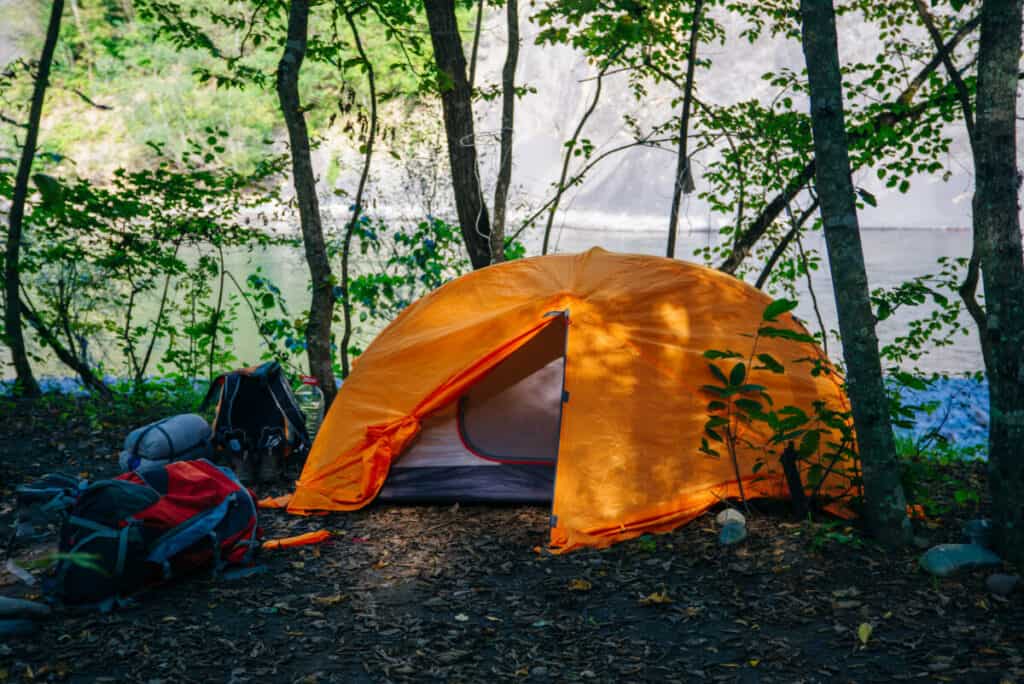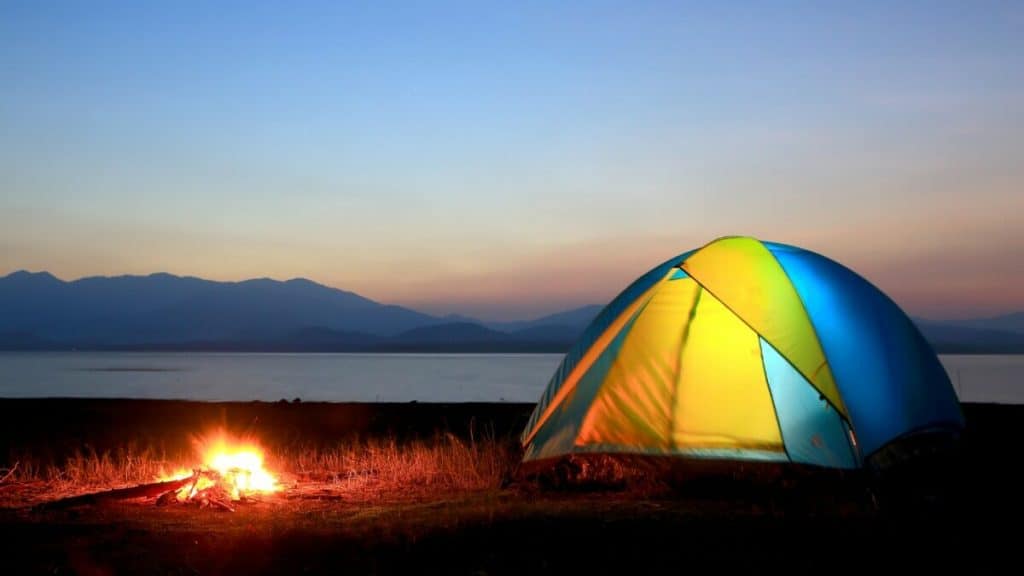
When it comes to camping, there are lots of items that are going to be essential, but most importantly are going to be your sleeping setup and how you are going to be transporting the equipment. So, when you decide to purchase your new camping gear, how long should you expect each item to last before needing to be replaced.
The lifespan of camping gear can vary greatly and the most important factor is how well each item is taken care of. Most camping gear can last for 10 or more years, and if you get heavier or higher quality gear, the lifespan of the item can be upwards of 20 to 30 years.
So, while the lifespan of camping gear can range a fair amount depending on how often it is used and how carefully it is taken care of, I will explain the low, average, and long lifespans that major camping items can have. These numbers here are going to be averages for the more common brands, so there is some variation, but these estimates should generally apply to most brands. I will cover the lifespans of sleeping bags, various types of sleeping pads, tents, hammocks, and the all-important camp chair.
Sleeping Bag
When it comes to sleeping bags, you have two options on bag types, synthetic and down. A common line in choosing a bag is “synthetics wear out fast”. The lifespan difference between the down and synthetic bags is in the insulation. Synthetic bags have typically lost significant loft after a few years whereas down bags have maintained their insulating properties for much longer.
So, when it comes to the low end of a sleeping bag’s lifespan, you can usually expect around 3 years. On the high end, you can expect 15 or more years of use when good care is taken to preserve its lifespan. The average lifespan of sleeping bags is 10 years.
Sleeping Pad or Air Mattress

Closed Cell Pads
When it comes to sleeping pads, closed-cell pads are the most durable option, and also the cheapest. My closed cell pad has been around for about 30 years and I haven’t taken any special steps to extend its lifespan. That is because these are extremely durable and are not vulnerable to leaks like other pads. However, these pads aren’t very comfortable and are bulky to transport.
Self-Inflating Pads
These pads are made from a mix of foam, heavy fabrics and air to make them more comfortable than most other sleeping pad options. Their heavy fabric makes them quite tough and if you clean and store them properly, self-inflating pads can last over 20 years.
Air Pads
Since these pads are more commonly meant for lightweight camping, they are thinner and use lighter materials. This makes them the lightest option, however, they also are the most fragile. Air pads can tear or puncture fairly easily. If you truly baby your air pad, it can last around 10 years. It is more likely that you will have to at least patch it earlier. Make sure to keep dogs, cacti and sharp rocks away from these. When my family and I car camp, I will often put a closed cell foam pad underneath to provide added warmth and puncture protection.
Tent

The last item we will cover that is the final important item in your camping sleep system is the tent. Like the items above, there are many factors that can affect how long your tent lasts, and their lifespans therefore tend to range widely, anywhere from 6 months to 10 years.
In the 6 month scenario, you may be wildland firefighter using the tent every day in extreme conditions with no additional protection for it, and the 10 year estimate is with good storage and rare use. Typically, a tent will last 3-5 years with moderate usage. You may get what you pay for: a higher quality tent with aluminum poles will likely last longer than a cheaper pop-up tent with plastic poles. I will never forget having to duct tape a failed plastic pole joint one night with one of my girls as we quickly tried to set up a pop-up tent as it started to rain.
The seven key factors that will affect a tent’s lifespan are:
- The quality of the tent construction and materials (moderately priced tents are often the best value for most campers)
- How often you use it
- How well you take care of it (e.g. drying before storage)
- The type of tent (dome tents are generally more resilient than cabin tents)
- The climate you use it in (extreme sun, rain, snow or wind will reduce the tent’s lifespan)
Hiking Backpack
Hiking backpacks can last for what seems like almost forever with minimal care. If you happen to have an older backpack with external metal framing, these can easily last over 50 years.
When it comes to modern backpacks, while lighter and slightly less durable than their metal-frame predecessors, they can last nearly as long and most people find that they simply want to try something new before they get close to wearing out or breaking their current pack. A modern backpack can last over 30 years. Just make sure that when you pack up your gear, there isn’t anything sharp that may puncture your bag, potentially shortening its lifespan.
Hammock

You can expect a nice camping hammock to last you around 7-10 years depending on the same factors that apply to tents. Hammocks can last this long even with fairly regular use both for camping and if you just casually place them up at your home. A rip could be started by contact with sharp or abrasive objects, so make to secure the hammock well and away from sharp sticks and empty those pockets of pointy things (like keys) to extend the lifespan of your hammock as long as possible.
Camp Chairs
The standard heavy-duty chairs car camping chairs can last for just about forever if you take decent care of them. Their metal frame construction and many layers of cloth make them super durable. When it comes to the lightweight camping chairs that some take backpacking, these have shorter lifespans, typically around 10 years.
